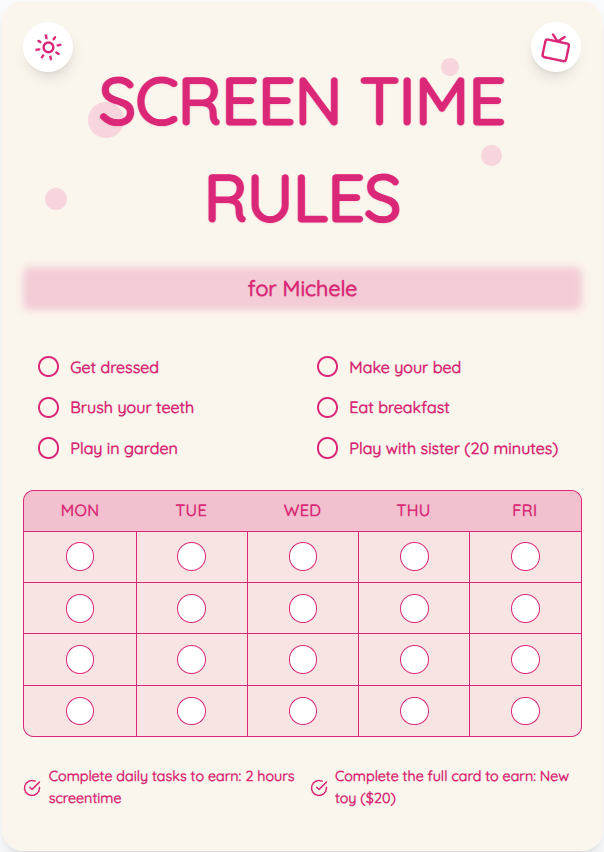Screen Time Limits by Age: Expert Advice for Parents
As a parent, managing your child's screen time can be challenging. Understanding the recommended screen time limits by age set by the NHS is crucial for your child's well-being and development. In this guide, we provide actionable advice and practical tips to help you navigate screen time effectively and promote a healthy balance in your child's life.
See What Your Screen Time Chart Will Look Like
Here's an example of a beautiful, customizable screen time rules chart you can create for your family

Importance of Setting Screen Time Limits
Excessive screen time can have negative impacts on children's physical health, mental well-being, and social skills. By setting appropriate limits, parents can ensure that their children engage in a variety of activities that promote learning and development.
Screen Time Guidelines by Age According to NHS
The NHS recommends specific screen time limits based on different age groups. For example, toddlers aged 2-5 should have no more than 1 hour of screen time per day, while older children can gradually increase their screen time with proper supervision. It's essential to tailor these guidelines to your child's individual needs and interests.
Put These Tips Into Action
Create a custom chart to implement these strategies with your child
Practical Tips for Managing Screen Time
1. Create a screen time schedule 2. Encourage outdoor activities 3. Set screen-free zones in the house 4. Use screen time as a reward 5. Engage in screen time activities together as a family 6. Monitor the content your child consumes
Practical Tips for Success
- Set clear boundaries and rules around screen time
- Encourage alternative activities like reading, playing outside, or arts and crafts
- Use parental control features on devices to limit screen time
- Lead by example and demonstrate healthy screen habits
Frequently Asked Questions
How can I determine the right amount of screen time for my child?
The recommended screen time limits provided by the NHS serve as a general guideline. However, it's important to observe your child's behavior and adjust the limits based on their individual needs and responses.
What are the potential risks of excessive screen time for children?
Excessive screen time can lead to issues such as obesity, sleep disturbances, behavioral problems, and reduced social interactions. Setting appropriate limits can help mitigate these risks.
How can I handle resistance from my child when enforcing screen time limits?
Communicate openly with your child about the reasons behind setting screen time limits. Involve them in the decision-making process and offer alternative activities to make the transition smoother.
Finding the right balance in managing your child's screen time is key to their overall well-being. By following the recommended guidelines and implementing practical tips, you can create a healthy screen time routine that supports your child's development. Visit ScreenTimeRules.com to generate personalized screen time charts tailored to your child's age and needs.
Ready to Transform Your Family's Screen Time?
Join thousands of parents who have successfully managed screen time with our customizable charts.
